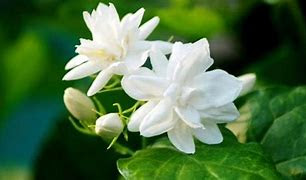Indonesia, the largest archipelago in the world, is not only known for
its stunning landscapes and rich cultural heritage but also for its diverse
flora and fauna. Among the many natural wonders that grace this nation, the
national flower of Indonesia holds a special place. This blog section aims to shed light on this Melati, symbol of beauty
and unity, exploring its significance and the cultural importance it holds for
the Indonesian people.
The Melati: A Fragrant Emblem
The national flower of Indonesia is the Melati, also known as Jasminum sambac or the Arabian Jasmine. This delicate white flower, with its intoxicating fragrance, has been cherished by Indonesians for centuries. The word "melati" itself means jasmine in the Indonesian language, and it represents purity, sincerity, and simplicity. The Melati is commonly used in religious ceremonies, traditional events, and even as a decorative element in households. Its enchanting scent fills the air, creating a serene and peaceful atmosphere.
Cultural Significance
The Melati holds immense cultural significance for the Indonesian people. It is deeply rooted in their traditions and is often associated with love, devotion, and respect. The flower is frequently used in wedding ceremonies, symbolizing the purity and everlasting love between the bride and groom. Additionally, the Melati is also used during religious rituals, such as offerings to deities and ancestral spirits, signifying the reverence and spirituality of the Indonesian culture. The flower's presence in these important events highlights its role as a unifying symbol that brings people together in celebration and reverence.
Historical Origins
The history of the Melati as the national flower
of Indonesia dates back to the colonial era. During the Dutch occupation, the
Melati was chosen as a symbol of resistance against the colonial rule.
Indonesian nationalists used the flower to represent their fight for
independence, as it embodied the spirit of purity and resilience. After gaining
independence in 1945, the Melati was officially declared the national flower of
Indonesia, cementing its place as a powerful symbol of the nation's struggle
and triumph.
Conservation Efforts


Post a Comment for "The National Flower of Indonesia: Melati A Symbol of Beauty and Unity"